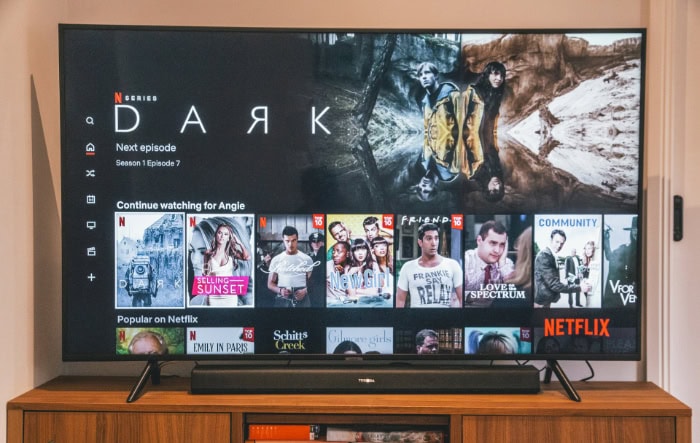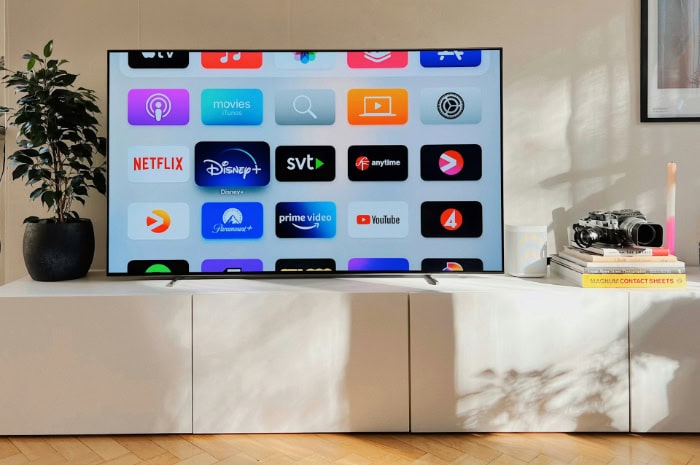What Is 4K Resolution? Why It’s Worth the Hype

The rise of 4K resolution has elevated visual entertainment to extraordinary heights, delivering unmatched detail and realism. With over eight million pixels packed into every frame, 4K offers stunning sharpness and vibrant visuals that make everything from movies and games to professional visuals feel incredibly lifelike.
As the successor to high-definition standards, it has quickly become the preferred choice for displays across homes, studios, and industries.
Technical Specifications
The technical aspects of 4K resolution are what set it apart as a cutting-edge standard in visual technology. From its impressive pixel count to advancements in display panels, understanding the specifications behind 4K helps demonstrate how it achieves such remarkable clarity and vibrant visuals.
Resolution Standards
4K resolution isn’t a single, universal format—it actually refers to two main standards that cater to different needs. The most common is UHD 4K, with a resolution of 3840 x 2160 pixels.
This version is widely used in consumer devices like televisions, monitors, and streaming services. Its resolution is precisely four times the pixel count of Full HD (1920 x 1080), delivering an unparalleled level of detail that ensures every image looks sharp, even on large screens.
The other standard, DCI 4K, features a slightly wider resolution of 4096 x 2160 pixels. Designed for professional use, particularly in the film industry, DCI 4K adheres to the Digital Cinema Initiatives specifications.
The extra width makes it perfect for cinematic applications, as it aligns with the aspect ratio used in most movies. While the differences between UHD 4K and DCI 4K may seem small, they can significantly impact how content is displayed, particularly in professional environments.
Beyond just the resolution numbers, pixel density plays an essential role in determining how clear an image looks. On smaller screens, high pixel density ensures that individual pixels are imperceptible, creating a smooth, seamless image.
On larger displays, such as home theater setups, the vast number of pixels in 4K ensures crisp visuals, even when viewed up close.
Display Technologies
The display technology supporting 4K resolution is just as important as the pixel count itself. Today’s 4K screens leverage innovations like LED and OLED panels to deliver breathtaking visuals.
LED displays, built on backlit LCD technology, are widely used in consumer electronics due to their affordability and bright, vibrant performance. On the other hand, OLED panels take things to the next level by offering self-emissive pixels that can achieve deeper blacks, sharper contrast, and richer colors.
OLED displays are particularly favored in high-end devices where image quality is paramount.
Refresh rates are another crucial element of 4K displays, especially for applications like gaming or sports viewing. A higher refresh rate, typically measured in hertz (Hz), allows the screen to update images more frequently, resulting in smoother motion.
While most 4K TVs and monitors operate at 60Hz, premium models can go up to 120Hz or more, providing a fluid and responsive experience that’s essential for fast-paced content.
Color depth also plays a significant role in 4K displays. Modern panels often support 10-bit color or higher, allowing for over a billion distinct colors to be rendered on-screen.
This expanded color palette results in more lifelike and nuanced visuals, particularly when combined with HDR (High Dynamic Range) technology. HDR further enhances the experience by boosting contrast, brightness, and color accuracy, making every frame appear closer to the way the human eye perceives the real world.
Together, these advancements in resolution standards and display technologies ensure that 4K visuals are not only sharper but also richer and more engaging, setting a new benchmark for video quality across consumer and professional applications alike.
Visual Benefits

The benefits of 4K resolution extend far beyond just higher pixel counts. Its ability to deliver sharper images, more accurate colors, and an immersive viewing environment has redefined how we experience visual content.
Whether on a television screen, computer monitor, or cinema display, 4K technology enhances the quality of what we see and how we perceive it.
Image Quality
Clarity and sharpness have always been the primary selling points of 4K resolution. With its over eight million individual pixels, 4K offers a level of detail that Full HD cannot match.
This clarity ensures that even the smallest elements in an image—such as fine textures, facial features, or background elements—are displayed with precision. The result is a picture so sharp that it feels lifelike, no matter the content.
Color accuracy is another significant advantage of 4K technology. Modern 4K displays use advanced color processing to reproduce tones with incredible fidelity.
This means colors appear more vibrant, natural, and true to life. Whether it’s the deep greens of a forest or the vibrant tones of a sunset, 4K brings colors to life in ways that older resolutions cannot.
HDR integration further elevates image quality by enhancing brightness, contrast, and color range. HDR (High Dynamic Range) allows 4K displays to show deeper blacks, brighter whites, and a broader spectrum of colors.
This technology ensures that every frame appears richer and more dynamic, amplifying the sense of realism in movies, games, and other visual content. HDR is especially impactful for scenes with high contrast—such as a bright moon against a dark night sky—making visuals more dramatic and true to life.
Viewing Experience
The way 4K improves the viewing experience goes beyond raw image quality. Optimal viewing distances play a critical role in ensuring that viewers can fully appreciate the resolution.
With 4K technology, you can sit closer to the screen without noticing individual pixels, a limitation that plagued older resolutions. This allows larger screens to be enjoyed from shorter distances, making the experience more immersive and ideal for home theaters or smaller spaces.
Screen size also matters when evaluating the impact of 4K. The higher pixel count ensures that images remain sharp and detailed regardless of how large the display is.
From small monitors to expansive projection screens, 4K provides consistent quality that scales seamlessly with the size of the screen. This versatility has made 4K popular across a wide range of devices, from compact laptops to massive televisions.
Perhaps its most transformative benefit is the immersive experience that 4K creates. The combination of sharp resolution and vibrant color depth draws viewers into the content, making them feel like they’re part of the action.
This is especially evident in gaming, where 4K allows players to explore virtual worlds with stunning clarity, and in films, where the enhanced detail and color accuracy pull the audience deeper into the story. Whether you’re watching a nature documentary, playing an open-world video game, or enjoying a blockbuster movie, 4K creates an experience that feels closer to reality.
Implementation Requirements

Bringing the full potential of 4K resolution to life requires more than just a capable display. From the hardware that processes and stores high-resolution content to the connectivity standards that deliver it seamlessly, several components work together to create the ultra-HD experience.
Ensuring all these elements function without compromise is vital for achieving the sharpness, vibrancy, and fluidity that 4K is known for.
Hardware Needs
A 4K display is the first and most essential component for experiencing ultra-high-definition content. These displays can range from televisions and monitors to laptops and projectors, all of which must have the capability to output 3840 x 2160 or higher resolutions.
It’s important to choose a display that supports advanced features like HDR, higher refresh rates, and extended color depth to fully appreciate what 4K technology offers.
However, a compatible display alone isn’t enough. Producing 4K visuals also depends on powerful graphics processing.
Graphics Processing Units (GPUs) play a significant role here, especially for tasks like gaming, video editing, and 3D rendering. Modern gaming consoles, high-end PCs, and even some smartphones are equipped with GPUs designed to handle the computational demands of 4K resolution.
Without sufficient processing power, 4K content may lag, stutter, or appear less smooth and detailed.
Storage capacity is another crucial factor. Since 4K videos contain significantly more data than HD, they require larger amounts of storage space.
A single 4K movie can consume tens of gigabytes, depending on its length and compression format. Devices with limited storage capacities, such as older laptops or basic streaming devices, may struggle to accommodate the file sizes of 4K content.
For those working in content creation, especially video editing, high-capacity solid-state drives (SSDs) or external storage solutions are often necessary for efficient workflows.
Connectivity
Delivering 4K visuals to your display requires modern connectivity standards capable of handling the massive bandwidth required by ultra-HD content. HDMI is the most prevalent connection type for 4K devices, but not all HDMI cables or ports are created equal.
To experience smooth 4K playback at higher refresh rates or with HDR enabled, HDMI 2.0 or HDMI 2.1 is essential. HDMI 2.1, in particular, supports features like 4K at 120Hz, offering a more fluid viewing experience for gaming and high-action content.
Bandwidth requirements for 4K content are also significant, especially for streaming platforms. A stable internet connection with a speed of at least 25 Mbps is typically recommended for streaming 4K content without buffering.
However, for larger households or environments running multiple devices, a higher-speed connection ensures uninterrupted performance. Ethernet connections can provide a more reliable alternative to Wi-Fi when streaming on 4K-compatible TVs, gaming consoles, or media players.
Streaming capabilities also depend on the platform and device in use. Many popular streaming services like Netflix, Disney+, and Amazon Prime Video offer 4K content, but these often require specific subscription tiers and compatible hardware.
Devices like streaming sticks, smart TVs, and gaming consoles need to support 4K decoding and HDR formats to display this content in its highest quality. For physical media enthusiasts, modern Blu-ray players designed for 4K Ultra HD discs ensure that even offline content is displayed at its best.
Professional Applications

The versatility and clarity of 4K resolution have made it indispensable across various professional fields. From content creation to industry-specific tasks, 4K provides the precision, detail, and realism necessary for achieving quality results.
Professionals increasingly rely on 4K technology not just for its visual appeal but for the practical benefits it offers in producing, analyzing, and visualizing information.
Content Creation
Film and television production have embraced 4K as the new standard for delivering cinematic experiences to audiences. The high resolution allows filmmakers to capture intricate details, preserving the richness of every frame.
Directors and editors benefit from the flexibility of 4K during post-production, where the extra pixel count enables techniques like cropping and reframing without sacrificing quality. Even for audiences watching on non-4K displays, the downscaled footage looks noticeably better than content originally shot in lower resolutions.
Photography and editing have also been elevated with 4K technology. Photographers can view their images on 4K monitors with unmatched clarity, ensuring no detail is overlooked during editing.
The finer pixel density allows for highly accurate retouching, color grading, and composition work. For professionals working with high-resolution images, such as in fashion, advertising, or print media, 4K displays provide the precision required to create flawless visuals.
Gaming development is another field that thrives on the capabilities of 4K. Developers can design worlds and characters with a level of detail that enhances realism and immersion.
The higher resolution enables artists to craft intricate textures and environments, while testers can spot imperfections more easily. For competitive games, 4K allows developers to create visually stunning experiences that hold up during fast-paced action.
As gaming increasingly leans toward realism, 4K provides the platform to make every digital moment feel tangible.
Industry Uses
In medical imaging, 4K has proven to be a transformative tool. The high resolution provides doctors and healthcare professionals with the sharpness required for tasks such as analyzing X-rays, CT scans, and other diagnostic images.
The ability to see even the smallest details aids in more accurate diagnoses and better treatment planning. In surgical applications, 4K displays are used to provide high-precision imagery during procedures, enhancing the surgeon’s ability to perform with confidence.
Architectural visualization relies heavily on 4K technology to create realistic renderings and walkthroughs. Architects and designers use 4K to showcase their creations in intricate detail, allowing clients to better understand and visualize the final product.
The crisp image quality helps highlight textures, materials, and spatial relationships, bringing concepts to life in a way that is both impactful and informative.
Security and surveillance benefit greatly from the clarity of 4K. High-resolution cameras enable security teams to capture footage that can make identifying people, objects, and details far easier compared to lower resolutions.
This is particularly valuable in environments like airports, banks, and public spaces, where monitoring needs to be both comprehensive and precise. The ability to zoom into footage without losing critical details enhances the effectiveness of surveillance systems and contributes to improved safety and security.
Consumer Considerations

As 4K technology becomes more widespread, consumers face various factors that can influence their decision to adopt it. From the initial costs of hardware to the long-term value it provides, 4K technology offers impressive benefits but also requires careful consideration of its practical implications.
Cost Factors
One of the primary considerations when adopting 4K technology is the upfront investment in a suitable display.
While the price of 4K televisions and monitors has dropped significantly compared to when the technology was first introduced, high-quality models with advanced features like OLED panels, HDR support, and high refresh rates can still represent a significant expenditure.
Consumers may find themselves weighing the additional cost of premium features against more affordable options that still deliver 4K resolution but with fewer enhancements.
Content availability is another aspect that directly impacts the cost-effectiveness of 4K technology. Streaming services, Blu-ray discs, and gaming platforms now offer an abundance of 4K content.
However, some services require subscription tiers that come at a higher price, and physical 4K media often costs more than its HD counterparts. While the growing library of 4K content ensures that consumers have access to more options than ever, those who primarily consume older or standard-definition content might find it challenging to justify the investment.
Upgrading infrastructure is often necessary to fully utilize 4K. Beyond the display itself, factors like connectivity and processing power need to be considered.
Older devices, such as gaming consoles, Blu-ray players, or streaming devices, may not support 4K output and might require replacement. Additionally, maintaining a fast and reliable internet connection is essential for streaming 4K content without interruptions.
These incremental costs can add up, making it important to ensure that the entire ecosystem is ready to support 4K capabilities.
Performance Metrics
The real-world benefits of 4K are undeniable. The sharpness, color fidelity, and visual depth offered by 4K resolution create a viewing experience that far surpasses HD in most scenarios.
Viewers can enjoy crisp details and lifelike visuals that enhance everything from movies and gaming to sports broadcasts and casual browsing. However, the extent of these benefits often depends on screen size, viewing distance, and the quality of the content itself, as poorly optimized footage may not take full advantage of 4K’s potential.
Balancing the quality-price ratio is another consideration when evaluating 4K devices. Mid-range options often provide an excellent combination of performance and affordability, while ultra-premium models offer cutting-edge features that cater to enthusiasts.
Comparing the value offered by a given device with its price point helps consumers determine whether the investment aligns with their needs and expectations. Value-conscious buyers may find that affordable options still deliver a significant improvement over Full HD without stretching their budgets.
Energy consumption is an often-overlooked factor in the transition to 4K. High-resolution displays, particularly those with larger screen sizes or advanced features like OLED panels, consume more power than standard HD models.
This can result in slightly higher energy costs over time, especially for users who spend extensive amounts of time watching or gaming on their devices. Energy-efficient models with certifications such as ENERGY STAR can help mitigate this impact while delivering excellent performance.
Conclusion
4K resolution has established itself as a groundbreaking advancement in visual technology, pushing the boundaries of clarity, color accuracy, and immersive experiences. With its ability to deliver unparalleled quality, 4K has become a staple in homes, professional environments, and industries that demand precision and detail.
From enhancing cinematic storytelling and gaming visuals to aiding professionals in fields like medical imaging and architectural design, its applications are broad and impactful.
While adopting 4K comes with considerations such as cost, hardware upgrades, and connectivity, the benefits it offers in image quality and performance make it a worthwhile investment for many.
Its role in transforming how we consume and create content is undeniable, and as technology continues to evolve, it’s clear that 4K will remain a defining standard for years to come.



